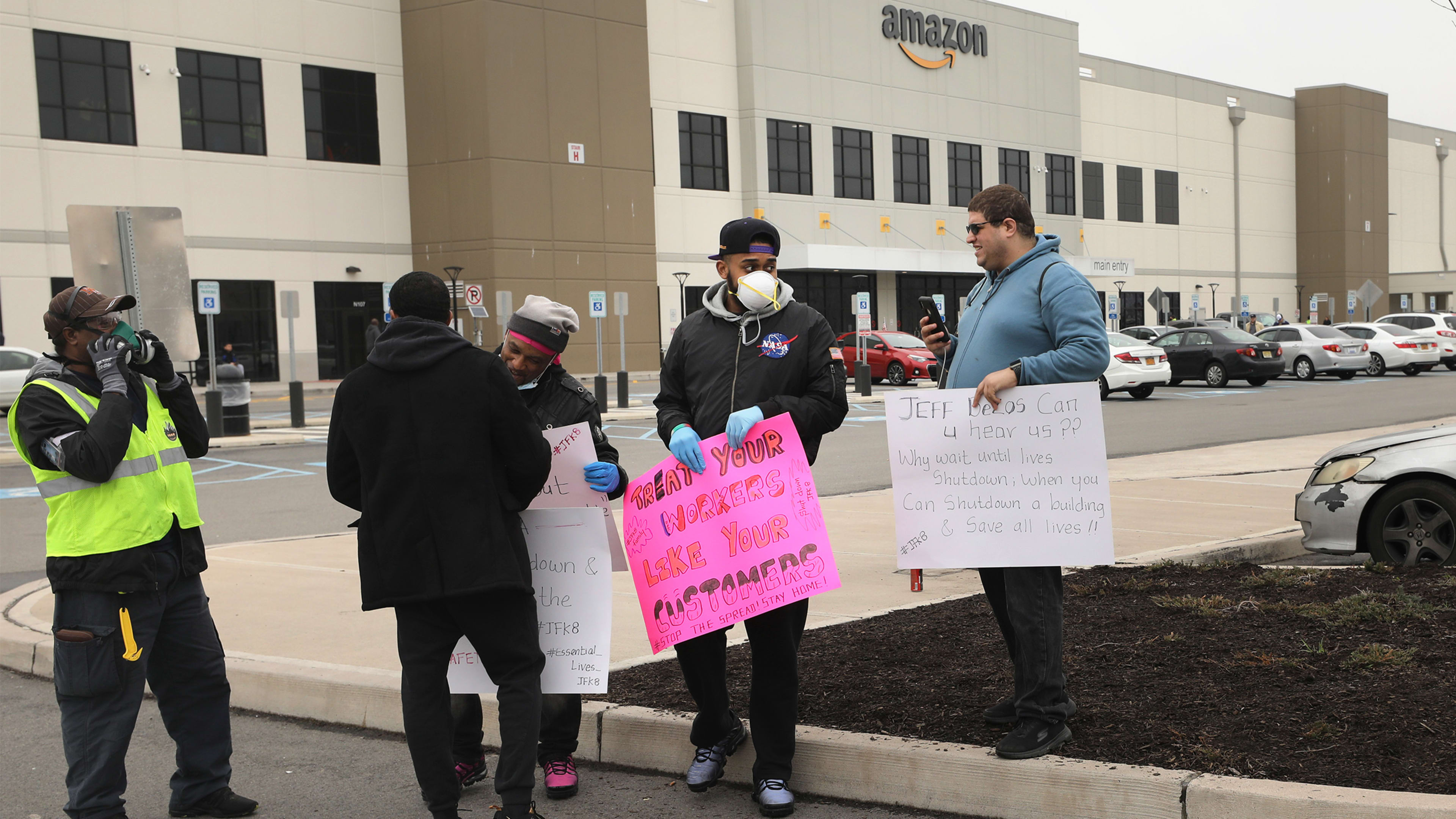This was already a devastating year for hard-working Americans, struggling to keep their jobs amid a pandemic made worse by corporate greed. Now, with the holiday season underway, “essential workers” employed in warehouses, delivering goods, and stocking grocery shelves find themselves in an even bigger crunch.
For millions of people who are unemployed or underemployed, it’s easy to lose hope. But it is at this moment, when working people are experiencing multiple intersecting crises, that a mass movement for livable wages, safe working conditions, and equality is more critical than ever.
We see these crucial struggles playing out around the country, with everyone from activists to nurses, delivery drivers, and professional athletes taking action to demand safe, just, and fair working conditions. While these fights have been playing out for a long time, workers have stepped them up during the pandemic after certain companies have failed to comply with CDC guidelines, putting workers and their families at risk.
While workers risk their lives each day, and many small businesses are struggling, there is one company profiteering off its near-monopoly status and the surge in e-commerce due to the pandemic: Amazon. CEO Jeff Bezos’s net worth continues to skyrocket—more than $200 billion at one point this year.
Hundreds of thousands of Amazon workers and contractors, who are the backbone of Bezos’s empire, face unsafe workplaces, unreasonable production quotas, and alleged retaliation for speaking out. Studies of Amazon’s own injury data for warehouse workers have shown injury rates three times that of the private sector as a whole and nearly double that of the warehouse industry. With the expansion of the company’s last-mile delivery network, subcontracted drivers typically make $15-$18 per hour and have limited benefits while facing ever-increasing delivery quotas as they deliver packages in communities throughout the United States. Despite unsafe working conditions and alleged retaliation, workers are fighting back and demanding action.
At one Minneapolis fulfillment center in October, more than 50 workers walked out in protest of a coworker’s unjust dismissal and successfully won her reinstatement. More recently, in response to COVID-19 infection rates significantly above the community average, that same group of largely Somali workers successfully won free COVID-19 testing for everyone working in the facility.
Minneapolis is a prime example of a place where workers, unions, and allies are pushing back against Amazon, but it does not stop there. It is happening all over the world. This Black Friday, unions and civil society from several different countries are joining together to “Make Amazon Pay”: a campaign that demands the company fairly compensate its employees, invest in the communities where it operates, and pay its fair share of taxes for vital public services.
In contrast to the conditions facing Amazon workers, we see a critical difference in how the labor movement has impacted the livelihoods of not just union members but all workers. Strong unions and their members have improved wages, benefits, and working conditions while driving up the standards for all workers.
Drivers for UPS, represented by my union, the Teamsters, earn an average of over $38 an hour, with wage increases per their union contract guaranteed for the next two years, and receive company-paid health benefits, overtime, paid leave, vacation, and a pension. The warehouse workers we represent at several different companies earn an average of $23 an hour, plus healthcare and retirement.
In 1955, America’s biggest employers were General Motors, U.S. Steel, General Electric, and Chrysler—all companies with a large union presence. A GM worker with a high school diploma and a family of four could buy a house and take a vacation. Wages were rising, and the benefits of a booming economy flowed to Americans at every income level.
Today, the top four employers are Walmart, Amazon, Kroger Food Stores, and Yum! Brands, which operates fast-food franchises. Only one, Kroger, has a significant union presence. In some states, a Walmart worker with a high school education could make as little as $15,500, which would place them below the federal poverty line and make them eligible for food stamps.
While a deadly virus is canceling holiday plans for extended and immediate families, most warehouse and retail workers and delivery drivers will continue working long hours through the end of the year to ensure Americans have food and gifts. It’s unacceptable that some of these workers will struggle to provide food and gifts for their own families.
This holiday season, let us commit—as consumers, political leaders, or union members—to supporting a new era of union growth and worker rights. The only counterbalance to corporate greed, racism on the job, wage inequality at work, and continued deterioration of real wages and working conditions is a voice on the job and a union contract.
Recognize your brand’s excellence by applying to this year’s Brands That Matter Awards before the early-rate deadline, May 3.
